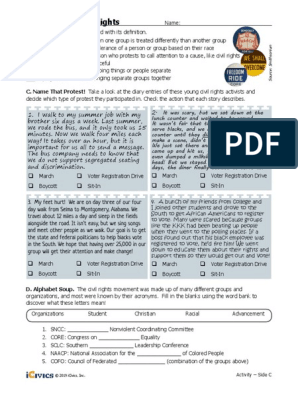0% found this document useful (0 votes)
10 views7 pagesDiversity
This lesson focuses on the civil rights movement of the 1950s and 1960s, examining significant protests, tactics, and the role of organized groups in advocating for diversity and equality. Students will analyze historical protests, engage in discussions, and develop action plans for contemporary diversity issues. The lesson emphasizes understanding the impact of civic participation on achieving public goals and the evolution of protest strategies over time.
Uploaded by
ogeneral046Copyright
© © All Rights Reserved
We take content rights seriously. If you suspect this is your content, claim it here.
Available Formats
Download as PDF, TXT or read online on Scribd
0% found this document useful (0 votes)
10 views7 pagesDiversity
This lesson focuses on the civil rights movement of the 1950s and 1960s, examining significant protests, tactics, and the role of organized groups in advocating for diversity and equality. Students will analyze historical protests, engage in discussions, and develop action plans for contemporary diversity issues. The lesson emphasizes understanding the impact of civic participation on achieving public goals and the evolution of protest strategies over time.
Uploaded by
ogeneral046Copyright
© © All Rights Reserved
We take content rights seriously. If you suspect this is your content, claim it here.
Available Formats
Download as PDF, TXT or read online on Scribd
/ 7






















































































